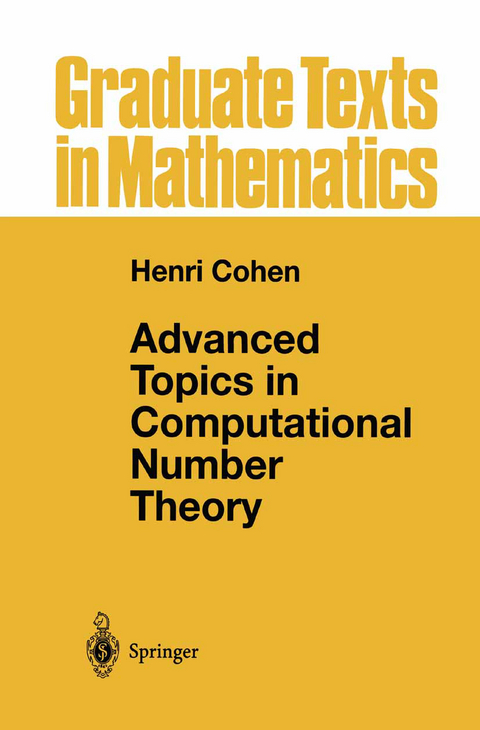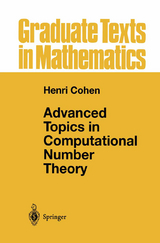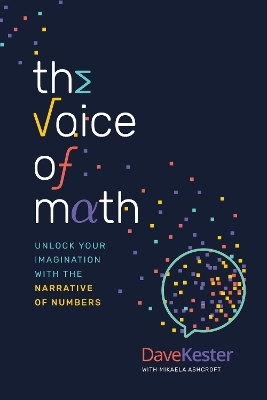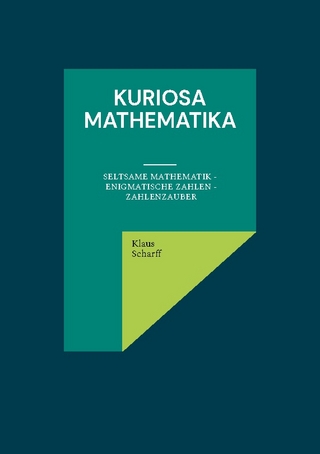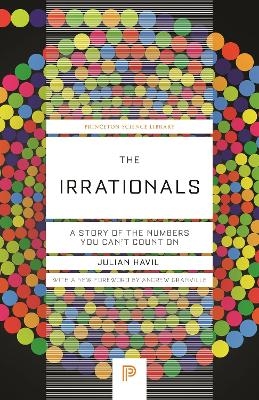Advanced Topics in Computational Number Theory
Springer-Verlag New York Inc.
978-0-387-98727-9 (ISBN)
1. Fundamental Results and Algorithms in Dedekind Domains.- 1.1 Introduction.- 1.2 Finitely Generated Modules Over Dedekind Domains.- 1.3 Basic Algorithms in Dedekind Domains.- 1.4 The Hermite Normal Form Algorithm in Dedekind Domains.- 1.5 Applications of the HNF Algorithm.- 1.6 The Modular HNF Algorithm in Dedekind Domains.- 1.7 The Smith Normal Form Algorithm in Dedekind Domains.- 1.8 Exercises for Chapter 1.- 2. Basic Relative Number Field Algorithms.- 2.1 Compositum of Number Fields and Relative and Absolute Equations.- 2.2 Arithmetic of Relative Extensions.- 2.3 Representation and Operations on Ideals.- 2.4 The Relative Round 2 Algorithm and Related Algorithms.- 2.5 Relative and Absolute Representations.- 2.6 Relative Quadratic Extensions and Quadratic Forms.- 2.7 Exercises for Chapter 2.- 3. The Fundamental Theorems of Global Class Field Theory.- 3.1 Prologue: Hilbert Class Fields.- 3.2 Ray Class Groups.- 3.3 Congruence Subgroups: One Side of Class Field Theory.- 3.4 Abelian Extensions: The Other Side of Class Field Theory.- 3.5 Putting Both Sides Together: The Takagi Existence Theorem 154.- 3.6 Exercises for Chapter 3.- 4. Computational Class Field Theory.- 4.1 Algorithms on Finite Abelian groups.- 4.2 Computing the Structure of (?K/m)*.- 4.3 Computing Ray Class Groups.- 4.4 Computations in Class Field Theory.- 4.5 Exercises for Chapter 4.- 5. Computing Defining Polynomials Using Kummer Theory.- 5.1 General Strategy for Using Kummer Theory.- 5.2 Kummer Theory Using Hecke’s Theorem When ?? ? K.- 5.3 Kummer Theory Using Hecke When ?? ? K.- 5.4 Explicit Use of the Artin Map in Kummer Theory When ?n ? K.- 5.5 Explicit Use of the Artin Map When ?n ? K.- 5.6 Two Detailed Examples.- 5.7 Exercises for Chapter 5.- 6. Computing Defining PolynomialsUsing Analytic Methods.- 6.1 The Use of Stark Units and Stark’s Conjecture.- 6.2 Algorithms for Real Class Fields of Real Quadratic Fields.- 6.3 The Use of Complex Multiplication.- 6.4 Exercises for Chapter 6.- 7. Variations on Class and Unit Groups.- 7.1 Relative Class Groups.- 7.2 Relative Units and Regulators.- 7.3 Algorithms for Computing Relative Class and Unit Groups.- 7.4 Inverting Prime Ideals.- 7.5 Solving Norm Equations.- 7.6 Exercises for Chapter 7.- 8. Cubic Number Fields.- 8.1 General Binary Forms.- 8.2 Binary Cubic Forms and Cubic Number Fields.- 8.3 Algorithmic Characterization of the Set U.- 8.4 The Davenport-Heilbronn Theorem.- 8.5 Real Cubic Fields.- 8.6 Complex Cubic Fields.- 8.7 Implementation and Results.- 8.8 Exercises for Chapter 8.- 9. Number Field Table Constructions.- 9.1 Introduction.- 9.2 Using Class Field Theory.- 9.3 Using the Geometry of Numbers.- 9.4 Construction of Tables of Quartic Fields.- 9.5 Miscellaneous Methods (in Brief).- 9.6 Exercises for Chapter 9.- 10. Appendix A: Theoretical Results.- 10.1 Ramification Groups and Applications.- 10.2 Kummer Theory.- 10.3 Dirichlet Series with Functional Equation.- 10.4 Exercises for Chapter 10.- 11. Appendix B: Electronic Information.- 11.1 General Computer Algebra Systems.- 11.2 Semi-general Computer Algebra Systems.- 11.3 More Specialized Packages and Programs.- 11.4 Specific Packages for Curves.- 11.5 Databases and Servers.- 11.6 Mailing Lists, Websites, and Newsgroups.- 11.7 Packages Not Directly Related to Number Theory.- 12. Appendix C: Tables.- 12.1 Hilbert Class Fields of Quadratic Fields.- 12.2 Small Discriminants.- Index of Notation.- Index of Algorithms.- General Index.
| Reihe/Serie | Graduate Texts in Mathematics ; 193 |
|---|---|
| Zusatzinfo | XV, 581 p. |
| Verlagsort | New York, NY |
| Sprache | englisch |
| Maße | 155 x 235 mm |
| Themenwelt | Mathematik / Informatik ► Mathematik ► Arithmetik / Zahlentheorie |
| Mathematik / Informatik ► Mathematik ► Graphentheorie | |
| Mathematik / Informatik ► Mathematik ► Wahrscheinlichkeit / Kombinatorik | |
| Naturwissenschaften ► Physik / Astronomie | |
| ISBN-10 | 0-387-98727-4 / 0387987274 |
| ISBN-13 | 978-0-387-98727-9 / 9780387987279 |
| Zustand | Neuware |
| Informationen gemäß Produktsicherheitsverordnung (GPSR) | |
| Haben Sie eine Frage zum Produkt? |
aus dem Bereich
